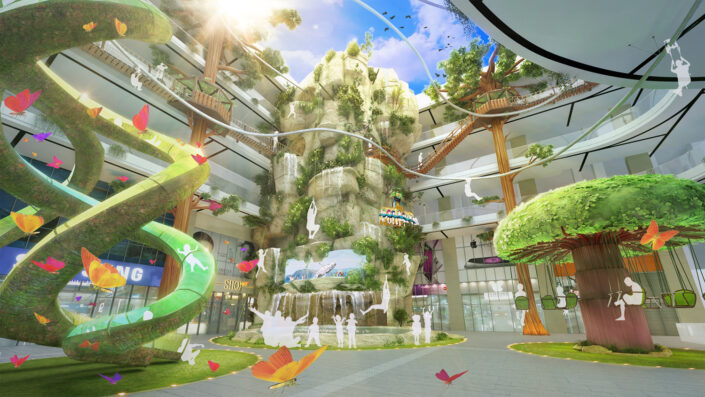Welcome to our blog on understanding the do’s and don’ts in approved public entertainment facilities! Whether you’re an event organizer, a venue owner, or simply someone interested in public entertainment, this blog is for you. In this article, we will explore the different types of approved public entertainment facilities and the role of patrons within them. We will also discuss the rules and regulations for alcohol consumption in licensed or permitted premises, as well as the guidelines for entering and leaving these facilities. Additionally, we will delve into the responsibilities of owners and operators in maintaining a safe and enjoyable environment for everyone. So, let’s dive in and gain a deeper understanding of how to navigate and make the most of these vibrant spaces!
Understanding the Different Types of Approved Public Entertainment Facilities
To ensure compliance with the Alcoholic Beverage Code, it is essential to understand the different types of approved public entertainment facilities. These facilities play a significant role in the promotion and sale of alcoholic beverages.

The code strictly prohibits deceptive, disparaging, or otherwise unlawful advertising of brewery products. This means that any advertisement that causes deception, creates a misleading impression, is untrue, disparages a competitor’s product, or is obscene or indecent is not allowed. It is crucial for event organizers and venue owners to adhere to these advertising guidelines to avoid any legal issues.
The code also specifies the mediums through which advertising of alcoholic beverages is covered. These include radio broadcasting, newspapers, periodicals, signs, outdoor advertising, and any printed or graphic matter. It is important to ensure that any advertising efforts comply with these mediums to prevent violations.
In addition to advertising regulations, the code also prohibits the advertisement of alcoholic beverages or their sale on public streets, alleys, or highways. This means that event organizers and venue owners need to be cautious about where they promote and sell alcoholic beverages to avoid any violations.
The Texas Alcoholic Beverage Commission (TABC) plays a crucial role in regulating promotional activities related to alcoholic beverages. This includes the use of business cards, menu cards, stationery, service vehicles and equipment, and delivery vehicles and equipment that bear alcoholic beverage advertising. The TABC also permits and regulates the use of insignia advertising malt beverages, distilled spirits, or wine by brand name on caps, regalia, or other promotional items. Event organizers and venue owners should familiarize themselves with these regulations and ensure compliance with the TABC guidelines.
Understanding the different types of approved public entertainment facilities, along with the regulations surrounding advertising and promotional activities, is essential for event organizers, venue owners, and anyone involved in the public entertainment industry. By adhering to these guidelines, they can ensure compliance with the Alcoholic Beverage Code and create a safe and lawful environment for patrons to enjoy alcoholic beverages.
The Role of Patrons in Approved Public Entertainment Facilities
The success and sustainability of approved public entertainment facilities heavily rely on the role of patrons. These individuals play a vital part in supporting and promoting these venues, ensuring their continued operation and growth.
One of the key contributions of patrons is their financial support. Through ticket purchases, memberships, and donations, patrons contribute to the financial sustainability of these facilities. This financial backing allows the venues to cover operational costs, invest in improvements, and bring in new and exciting entertainment offerings.
In addition to financial support, patrons also serve as ambassadors for the facility. By spreading awareness and sharing positive experiences, they attract new visitors and help build a strong reputation for the venue. Word-of-mouth recommendations from satisfied patrons can be a powerful tool in attracting a larger audience.
Furthermore, the engagement and feedback of patrons are essential for the continuous improvement of these facilities. Their input helps shape the quality and variety of entertainment offerings, ensuring that the venue meets the preferences and expectations of its audience. Surveys, feedback forms, and suggestion boxes are often used to gather this valuable feedback from patrons.
Patrons can also actively participate in shaping the programming and events at these facilities. Their opinions and preferences are taken into consideration when planning future activities. This involvement creates a sense of ownership and community among patrons, fostering a positive and inclusive environment within the venue.
Additionally, the loyalty and support of patrons can help these facilities secure sponsorships and partnerships with businesses and organizations. Sponsors are more likely to invest in venues that have a dedicated and engaged patron base, as it demonstrates the potential for a wider reach and impact.
Beyond financial contributions and advocacy, patrons can also volunteer their time and skills to assist with various tasks and events at the facility. This volunteerism not only helps lighten the workload but also creates a sense of camaraderie and shared responsibility among patrons.
Recognizing and appreciating the contributions of patrons is crucial for maintaining their loyalty and continued support. Facilities should take the time to acknowledge and thank their patrons, whether through special events, exclusive offers, or personalized communications. By nurturing these relationships, public entertainment facilities can create a strong and loyal patron base that will help ensure their long-term success.
The Do’s and Don’ts of Alcohol Consumption in Licensed or Permitted Premises
Transitioning from the previous section on personal alcohol consumption, it’s important to also consider the guidelines and regulations surrounding alcohol consumption in licensed or permitted premises. Whether you’re an event organizer, venue owner, or simply someone interested in public entertainment facilities, understanding the do’s and don’ts of alcohol consumption in these settings is crucial.

One of the key aspects of responsible alcohol consumption in licensed or permitted premises is setting a limit. This can help individuals keep their drinking under control and prevent excessive consumption. Taking breaks between drinks and avoiding drinking games are also important practices to avoid consuming alcohol too quickly and to ensure that individuals are aware of their alcohol intake.
Another important guideline is to alternate alcoholic beverages with non-alcoholic drinks. This can help reduce overall alcohol intake and ensure that individuals stay hydrated throughout the event or gathering. It’s also important for venue owners to consider offering a variety of non-alcoholic options to cater to those who may not want to consume alcohol.
Removing alcohol from the home is another important practice to consider. By not keeping beer, wine, or hard liquor readily available, individuals can make it easier to resist the temptation to drink excessively. This can be especially helpful for those who are trying to cut back on their alcohol consumption.
Related Posts
Taking a break from drinking can also be beneficial in assessing one’s relationship with alcohol and understanding how they feel without it. This break can provide individuals with the opportunity to assess their physical and emotional well-being and determine if they may have a problem with alcohol that needs to be addressed.
Saving money that would have been spent on alcohol can also be a motivating factor to cut back. By putting the amount of money saved from not purchasing alcoholic beverages into a jar, individuals can see the tangible benefits of reducing their alcohol consumption. This saved money can then be used for other purposes, such as going on vacation, dining out with friends, or purchasing something they’ve been wanting.
Eating before consuming any alcohol and continuing to eat while drinking is another important practice to slow down the effects of alcohol. By having a meal before drinking and snacking throughout the event or gathering, individuals can ensure that their bodies are better equipped to handle the alcohol they consume.
Lastly, it’s important to avoid places or situations where individuals may feel bored or uncomfortable without drinking. This can help individuals stay on track with their goals of cutting back on their alcohol consumption and avoid any potential triggers that may lead to excessive drinking.
By following these do’s and don’ts of alcohol consumption in licensed or permitted premises, event organizers, venue owners, and individuals can promote responsible drinking practices and ensure the safety and well-being of everyone involved.
Rules and Regulations for Entering and Leaving Public Entertainment Facilities
Rules and regulations play a crucial role in ensuring the safety and well-being of visitors in public entertainment facilities. These rules help to maintain order and prevent disruptions, creating a positive and enjoyable experience for everyone involved. It is important for event organizers, venue owners, and the general public to be aware of the specific rules and regulations that apply to entering and leaving these facilities.

Failure to follow the rules and regulations can have consequences, both for the individuals involved and for the facility itself. Visitors have a responsibility to adhere to the rules, while facility management has a responsibility to enforce them. This shared responsibility ensures a safe and pleasant environment for all.
The rules and regulations can vary depending on the type of entertainment facility. For example, stadiums may have specific rules regarding seating arrangements and prohibited items, while theaters may have rules about late entry and the use of electronic devices. Amusement parks may have height and age restrictions for certain rides. It is important for visitors to familiarize themselves with these rules before attending an event.
Enforcing rules and regulations is typically the responsibility of security personnel. They are trained to handle situations that may arise and ensure that everyone is following the rules. Clear communication and signage are also important to inform visitors about the rules and regulations. This can help prevent misunderstandings and ensure that everyone is aware of what is expected of them.
Understanding the Responsibilities of Owners and Operators in Approved Public Entertainment Facilities
Understanding the Responsibilities of Owners and Operators in Approved Public Entertainment Facilities
When it comes to public entertainment facilities, responsible owners and operators play a crucial role in ensuring the safety and well-being of visitors. Their responsibilities extend far beyond providing a fun and enjoyable experience for attendees.
One of the primary responsibilities of owners and operators is to maintain the physical condition of the facility. This includes conducting regular inspections and implementing necessary maintenance measures to prevent accidents and injuries. By identifying and addressing potential hazards or risks, owners and operators can create a safe environment for visitors.
Compliance with safety regulations and guidelines is another essential aspect of their responsibilities. Owners and operators must ensure that the facility meets all relevant safety standards and that proper emergency procedures are in place. Having trained staff members on hand to handle emergencies is crucial to ensuring the safety of visitors.
In addition to safety, owners and operators should prioritize security measures within the facility. This includes implementing measures to protect visitors from potential threats or incidents. Adequate security personnel, surveillance systems, and access control measures should be in place to enhance visitor safety.
Accessibility and inclusivity are also important considerations for owners and operators. It is their responsibility to ensure that the facility is accessible to all individuals, regardless of their physical abilities. Making necessary accommodations and providing accessible amenities is essential to creating an inclusive environment.
Regular communication and feedback from visitors should be encouraged to address any concerns or improve the overall experience. Owners and operators should be open to receiving feedback and take appropriate actions to address any issues raised by visitors.
Ultimately, the responsibility of owners and operators is to provide a safe and enjoyable environment for visitors to enjoy public entertainment. By fulfilling their responsibilities diligently, they can create memorable experiences for attendees while prioritizing their safety and well-being.
To Wrap Things Up
In conclusion, understanding the do’s and don’ts in approved public entertainment facilities is crucial for event organizers, venue owners, and the general public. By familiarizing ourselves with the different types of approved facilities and the role of patrons within them, we can ensure a safe and enjoyable experience for all. Adhering to the rules and regulations for alcohol consumption in licensed or permitted premises is essential in promoting responsible behavior. Additionally, following the guidelines for entering and leaving these facilities helps maintain order and security. Lastly, recognizing the responsibilities of owners and operators in providing a safe environment highlights the importance of their role in creating memorable and enjoyable experiences. By being knowledgeable and mindful of these factors, we can contribute to the success and longevity of approved public entertainment facilities.
Sources:
- ALCOHOLIC BEVERAGE CODE CHAPTER 108. ADVERTISING – Texas Statutes
- TABC Flashcards – Quizlet
- Drinking Do’s and Don’ts – Campus Health & Wellbeing – Cal Poly, San Luis Obispo
- CHAPTER 6-18. – PUBLIC ENTERTAINMENT FACILITIES | Code of Ordinances | Athens-Clarke County, GA | Municode Library
- Chapter 532 – Amusements and Exhibitions – Connecticut General Assembly

















